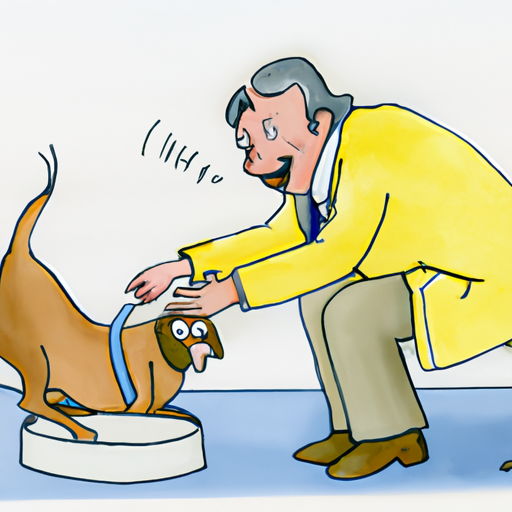Understanding Why Bladder Expression is Necessary
Bladder expression is a crucial skill that you, as a caregiver, may need to learn if your dog suffers from certain conditions. A dog may require bladder expression due to a variety of reasons, such as spinal injuries, neurological disorders, or age-related incontinence. It’s essential to understand that the inability to naturally eliminate can lead to life-threatening complications, like urinary tract infections and bladder stones.
Learning the Signs of a Full Bladder
Before you learn the technique of bladder expression, you should be well-versed with the signs of a full bladder. Here’s what you should look out for:
- Swelling in the lower abdomen
- Signs of discomfort such as whining or restlessness
- Attempts to urinate with little success
The Technique of Bladder Expression
Bladder expression is a delicate procedure that needs to be done with care. Here’s a step-by-step guide:
- Place your dog on a comfortable, slip-free surface.
- Stand or kneel beside your dog, depending on their size.
- Place your hands on their lower abdomen. The bladder is located towards the back end of the dog, before the hind legs start.
- Gently feel for a balloon-like structure. This is the bladder.
- Once you have located the bladder, apply gentle, steady pressure. If done correctly, your dog will start to urinate.
- The process should not cause any pain to your dog. If they show signs of discomfort, stop immediately and consult a vet.
Precautions and Possible Complications
While bladder expression is a lifesaver for many dogs, it’s not without its risks. Here are some precautions to take:
- Always consult a vet before starting bladder expression.
- If your dog shows signs of pain or distress during the process, stop immediately.
- Overzealous expression can lead to a ruptured bladder, a life-threatening condition.
- Infections can occur if the area is not cleaned properly.
| Precaution | Solution |
|---|---|
| Pain during expression | Consult a vet |
| Possible infection | Clean the area properly |
| Risk of bladder rupture | Don’t apply too much pressure |
Sustaining the Quality of Life for Your Dog
Bladder expression, while challenging at first, can dramatically improve your dog’s quality of life. Remember, your patience and dedication are a testament to your love for your furry friend. By mastering this skill, you are providing your dog with a more comfortable and dignified life.
FAQs
Q: How often should I express my dog’s bladder?
A: Typically, a dog’s bladder should be expressed three to five times a day.
Q: Can bladder expression hurt my dog?
A: If done correctly, it should not cause any pain. If your dog shows signs of distress, stop immediately and consult a vet.
Q: Can all dogs have their bladders expressed?
A: No, only dogs with certain medical conditions require bladder expression. Always consult a vet for advice.
Q: Can I use bladder expression for my cat?
A: Yes, the technique can be used for cats as well, but always under veterinary guidance.
Q: How do I know if I’m doing it right?
A: If you’re doing it right, your dog will start to urinate. If they show signs of discomfort, stop immediately and consult a vet.
Remember, it’s always best to consult with a veterinarian before attempting bladder expression at home. They can provide a hands-on demonstration and guide you through the process, ensuring safety and comfort for your beloved pet.



